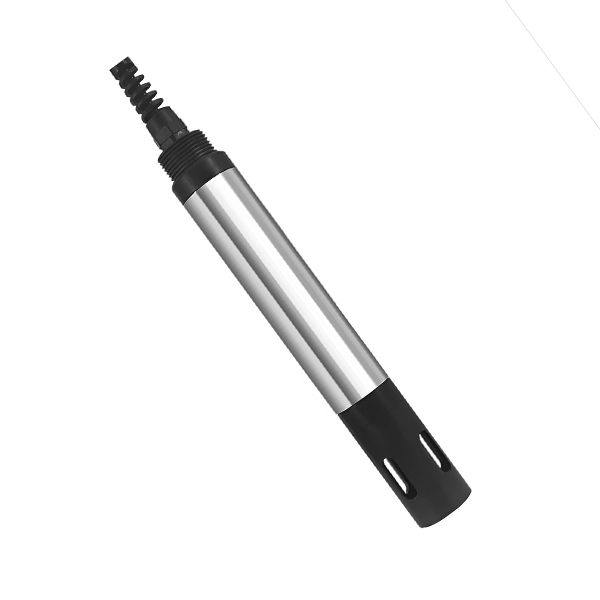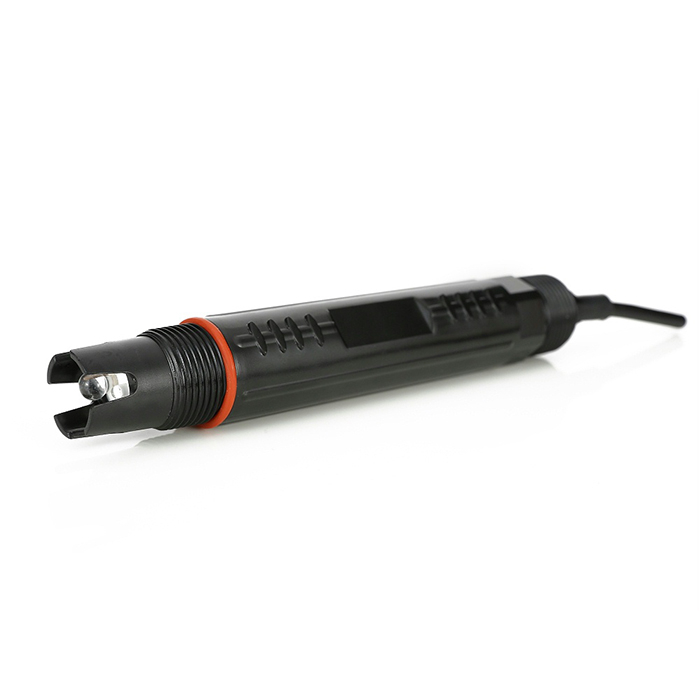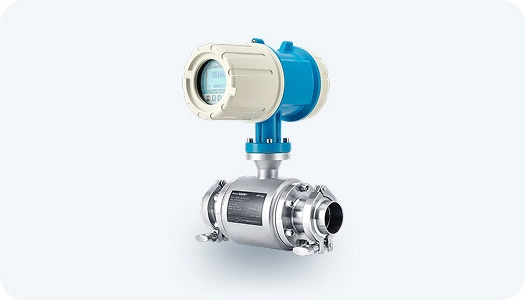-
Date:2025-10-21
-
Page View:98
An industrial pH sensor is primarily used to measure the acidity or alkalinity of water, which plays a crucial role in understanding the chemical properties and biodiversity of aquatic environments. For instance, some aquatic organisms are highly sensitive to pH levels, and unsuitable pH conditions can affect their survival and reproduction. Industrial pH sensors typically operate based on the potentiometric principle, determining the pH value of a solution by measuring the potential difference between the electrode and the liquid.
Applications:
In environmental monitoring, industrial pH sensors are used to measure the acidity or alkalinity of water, which helps in assessing the chemical characteristics and ecological balance of aquatic systems. In the aquaculture industry, maintaining optimal pH levels is essential for the healthy growth of aquatic animals, and industrial pH sensors enable farmers to monitor water quality in real time. In the pharmaceutical manufacturing field, pH sensors are employed to monitor the acidity or alkalinity of drugs and body fluids, which is vital for drug development and medical diagnostics.
What Factors Affect the Accuracy of an Industrial pH Sensor?
The accuracy of an industrial pH sensor can be influenced by several factors, including temperature, solution concentration, chemical substances, light exposure, and storage conditions. Below is a detailed explanation of each factor:
1. Temperature:
Temperature has a significant impact on the performance of pH electrodes. As temperature increases, the sensitivity of the electrode decreases and may even lead to electrode failure. Therefore, pH measurements should be performed at room temperature whenever possible, avoiding environments that are too hot or too cold.
2. Solution Concentration:
When the solution concentration is high, the sensitivity of the pH electrode tends to decrease. Additionally, highly concentrated solutions can affect the electrode’s stability and shorten its lifespan.
3. Chemical Substances:
Certain chemical ions, such as chloride and fluoride, can penetrate deeply into the pH electrode’s glass membrane, causing deviations in measurement results. Strong acids like concentrated sulfuric acid and nitric acid may also alter the electrode glass’s acidity and conductivity, affecting accuracy.
4. Light Exposure:
Exposure to light may cause the pH electrode to generate a photocurrent, which can interfere with pH readings. To ensure accurate measurements, pH electrodes should be kept away from direct or intense light during use.
5. Storage Conditions:
When not in use, pH electrodes should be stored in a proper storage solution and replaced regularly. During storage, avoid exposing the electrode to sunlight or extreme temperature conditions, as these can damage its performance and shorten its service life.
6. Experimental Conditions:
When measuring multiple liquids continuously, the pH electrode may experience “interference,” resulting in deviations in the pH readings. In addition, scratches or impacts on the electrode surface during contact with the solution can also cause measurement errors.
7. Glass Membrane:
The pH electrode is typically made of glass, and any coating or buildup on the glass surface—such as contaminants, solids, or biofilms—can significantly alter the pH readings. Therefore, the glass surface should be cleaned regularly, but harsh cleaning methods should be avoided to prevent damage.
8. Diaphragm (Junction):
The pH electrode contains a diaphragm made of porous ceramic, PTFE rings, or fine pores. Blockage by soluble compounds can increase resistance and cause a decrease in the measured pH value.
9. Reference Electrolyte and Reference Electrode:
Electrode poisons present in the sample medium can corrode the silver/silver chloride (Ag/AgCl) reference electrode, leading to potential drift and inaccurate readings.
10. Moisture and Pressure:
Insufficient moisture or excessive pressure can damage the reference glass material inside the industrial pH sensor.
In summary, to improve the accuracy of an industrial pH sensor, it’s essential to consider all these factors and take appropriate measures during operation to minimize or eliminate their impact.

water ph sensor

ph and orp sensor

sensor ph meter
Common Issues and Troubleshooting of Industrial pH Sensor Probes
The Industrial pH Sensor is an important measurement device widely used in laboratories and industrial applications to determine the acidity or alkalinity of solutions. However, prolonged use or improper operation can cause various issues with the pH probe, affecting its accuracy and reliability. Below, we outline common probe problems and provide practical solutions to help users resolve them and ensure accurate pH measurements.
1. Probe Corrosion and Contamination
One common issue with industrial pH sensor probes is corrosion and contamination. Long-term exposure to acidic or alkaline solutions can corrode the metal electrodes or contaminate the sensor membrane, resulting in slower response times or loss of responsiveness. Solutions include regular cleaning and calibration of the probe, using appropriate cleaning solutions and methods to maintain a clean surface and proper functioning.
2. Errors Caused by Temperature Changes
Temperature significantly affects pH measurements, making temperature compensation critical. A common problem is a malfunctioning temperature sensor or inaccurate temperature compensation, which can lead to errors in pH readings. The solution is to calibrate the temperature sensor regularly and ensure that the temperature compensation algorithm is correctly configured and applied.
3. Electrode Aging and Damage
The electrodes are the core components of an Industrial pH Sensor probe and can experience aging or damage after prolonged use. Aging electrodes may respond more slowly or lose responsiveness, while damaged electrodes can produce inaccurate pH measurements. Solutions include regularly replacing the electrodes and storing them properly to prevent mechanical damage or interference.
4. Cable Connection Issues
Cable connections are another common failure point for industrial pH sensor probes. Poor connections can cause signal interference or disconnection, affecting measurement accuracy. To address this, check the tightness and stability of all cable connections, and repair or replace any damaged cables.
5. Incorrect Calibration and Maintenance
Improper calibration and maintenance are also frequent causes of pH probe problems. Inaccurate calibration can lead to measurement errors, and inadequate maintenance may cause sensor damage or reduced performance. The solution is to calibrate the probe regularly using standard buffer solutions and follow the manufacturer’s recommended maintenance procedures.
Industrial pH sensors are designed for industrial environments, offering high durability and stability. They typically feature a long service life and low maintenance costs, making them suitable for harsh operating conditions. Industrial pH sensors are widely used in water quality monitoring, food processing, and chemical production, providing reliable support for industrial processes.










